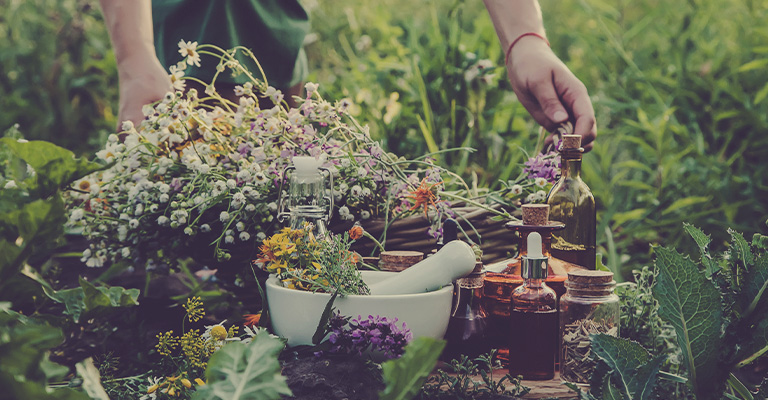
Aromatic herbs are commonly used to season a wide range of dishes. Some of them have known a somewhat unusual past, halfway between a promising medicine and witchcraft.
Between myth and reality, we invite you to discover the strange powers that were once attributed, rightly or wrongly, to your favourite herbs.
The study of herbs is well-documented. Evidence of early herb gardens dates to Europe in the Middle Ages. Egyptian schools of herbalists have existed since 3000 B.C. Scholars were interested in herbal medicine, cosmetics, cooking, history and folklore. Most herbs are symbolic. For example, borage (Borago officinalis) was given to those who needed courage, while rosemary (Rosmarinus officinalis) was given to others for remembrance.
In the Middle Ages, herbs were often used to help preserve meat and cover the rotting taste of foods that couldn’t be refrigerated. Herbs also helped mask the odours of people who bathed irregularly, if at all. This period was not favourable to the progress of herbs in medicine. In fact, the Catholic Church began burning herbalists, having associated them both with witchcraft and paganism.
Many of the early settlers grew herbs for seasoning their food as well as for their medicinal properties. The First Nations often used herbs for tanning and dyeing leather, and during spiritual rituals.
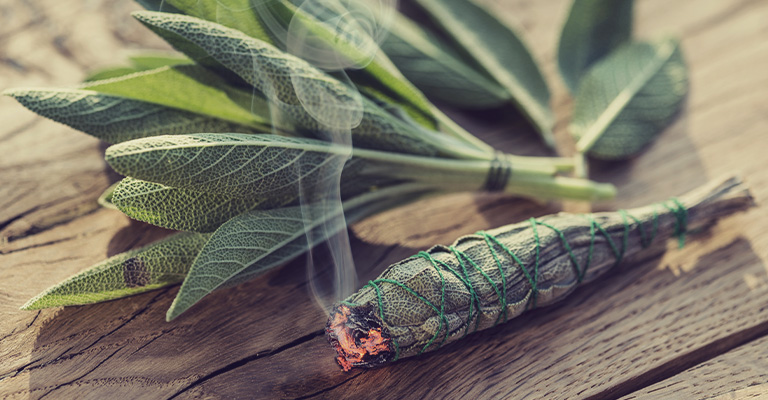
"Whoever has sage in the garden will live forever", they used to say. Another version claimed that simply growing the herb in the garden was enough to keep the doctor away. Although none of these maxims could be proven, the name "sage" comes from the Latin word "salvare", which means "to save".
Sage was used in English courts to freshen the air in royal residences. A concoction made with sage, chamomile, rue, lavender and roses was diffused through the palace by the “royal herb strewer”… nothing less!
At a time when septic systems were non-existent, the smell that reigned even in royal residences was often foul. The herbs helped mask the smell.
Later, in the 18th century, asthmatics smoked sage in the form of cigarettes to relieve their respiratory problems. Even today, sage is renowned for relieving respiratory system disorders, now as a cocktail or in a steam bath.
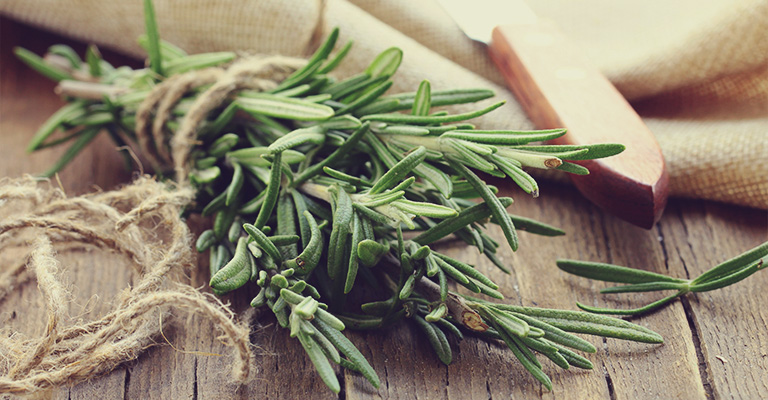
During ancient times, women would carry rosemary sprigs in their hands when they got married. Some cultures believed that if a girl put rosemary under her pillow, she would dream about her future husband.
In Tudor times, brides would often wear wreaths of rosemary around their heads during a wedding feast. After the wedding ceremony, some guests would sprinkle rosemary needles into the marriage bed for good luck.
Rosemary was also used to mask bad smells, but more for those of spoiled meat and fish. Some will wonder why rosemary still often accompanies these foods on our plates today!
If we continue in the same vein, the aromatic herb was also used to adorn the inside of coffins and counter the smell of decomposition as much as possible. It is said that while opening coffins, French botanist Jacques-Christophe Valmont de Bomare (1731-1807) was amazed to discover that the rosemary branches in the hands of the corpses had grown until they completely covered the body of the deceased.
Slipping sprigs of rosemary under the pillow is an enduring custom. Originally, it was done to ward off nightmares. If nothing has been proven regarding the quality of sleep, it is now believed that rosemary would help increase intellectual faculties. Preliminary research demonstrates a positive effect of the plant on short-term memory as well as on concentration.
Students in ancient Greece wore rosemary crowns to increase their intellectual acuity. It seems our ancestors were quick-witted!
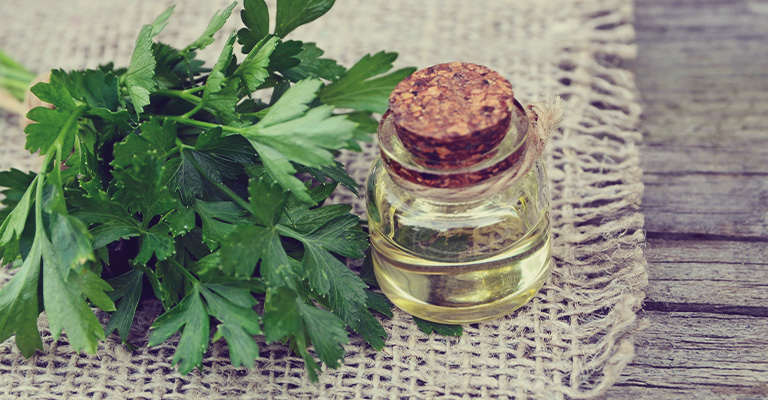
According to a popular belief, parsley is so slow to germinate that it went to see the devil nine times before emerging from the ground. In Europe, a plate decorated with a sprig of parsley indicated that the chef had taken care of it personally.
Over time, several virtues were granted to parsley, including those of controlling various disorders and diseases: urinary, cardiac, digestive, ear infections, diabetes, eczema, menstrual.
Also, it was recognized that parsley stops bad breath. The Romans were therefore not entirely wrong to chew it to camouflage the smell of alcohol!
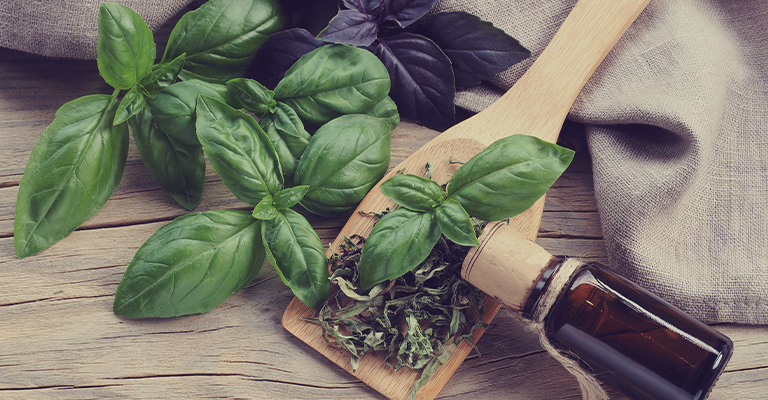
Though the origin of basil remains uncertain (likely South Asia or Central Africa), it appears to have been imported to the land of the pyramids more than 4000 years ago. In ancient Egypt, the herb that makes up our pesto was used in the mummification process.
In ancient Greece, there was a belief that putting crushed basil leaves under a stone caused a scorpion to be born there. In ancient times, it was simply considered a royal plant, and in India, as in Nepal, it has been used for millennia to clarify the mind and purify the conscience.
It is still believed to have the power to help fight anxiety. Basil essential oil would thus help to reduce mental fatigue and have antidepressant properties. Some go so far as to say that it would increase mental and sensory acuity, as well as memory.
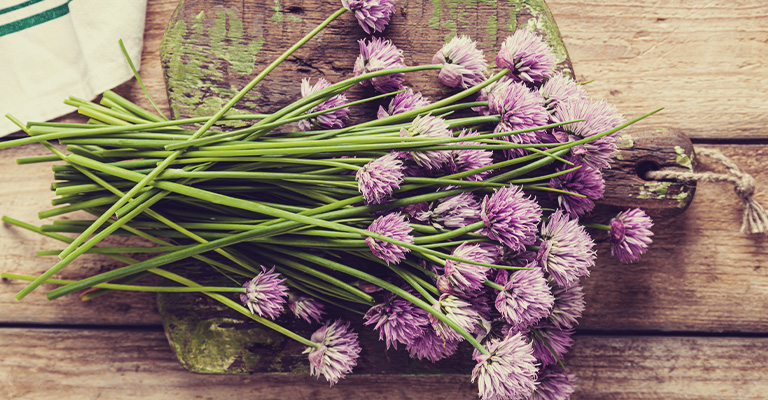
Chives were used by Romanian gypsies to tell fortunes. They also hung bunches of chives in their homes to keep disease and evil at bay.
In the Middle Ages, it was called “appetite” because of the appetizing properties attributed to it. The Romans used chives to treat sunburns and sore throats.
Chives are part of the genus Allium, like garlic, onion and leek. Rich in antioxidants and vitamin K, it would help prevent certain cancers and play a role in blood clotting and maintaining the elasticity of vessels. In a blend, it would act as a purifying lotion for oily skin.
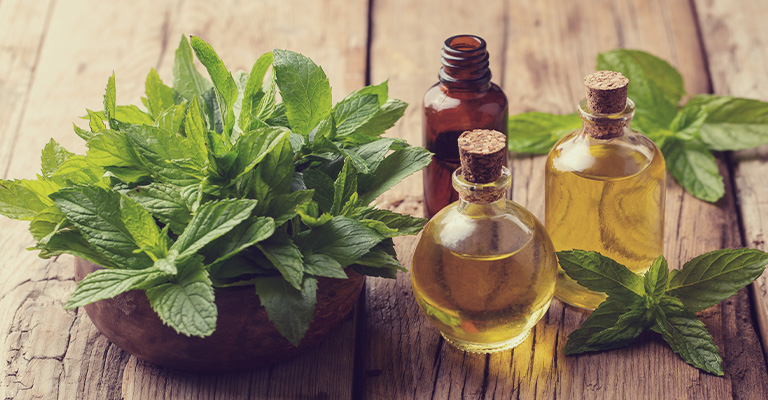
In the 18th century, people drank a mixture of mint juice and vinegar to stop hiccups. More recently, research carried out in India tends to show that mint repels and even kills certain insects responsible for the spread of infectious diseases such as malaria.
It is used as a tonic in case of fatigue, as a remedy for digestive problems, and we value its calming and anti-inflammatory properties. Mint might also one day be used in the preparation of a drug to treat degenerative brain diseases such as Alzheimer's.
Recent studies have shown that spearmint and rosemary extracts could increase the memory and learning ability of mice. Fingers crossed!
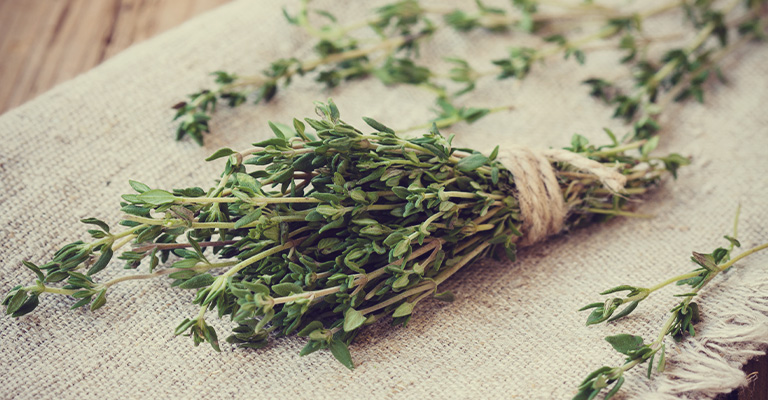
Like rosemary, thyme was once used to mask the smell of spoiled meat and fish. Long ago, the Egyptians used it in the manufacture of the ointment used to embalm their dead. It was also burned as an incense to ward off poisonous creatures... Around the same time, witches used it to make love potions.
Ancient Romans believed that eating thyme or bathing in it would protect one from being poisoned. They also burned bundles of thyme before battle in order to evoke courage into a soldier’s heart.
Years later, during the time of the Black Death, thyme was one of the herbs that was placed into bundles and worn around one’s neck in hopes to protect against the disease.
In Victorian times, thyme became associated with finding fairies. Children would hide near patches of thyme in the woods, hoping to catch a glimpse of the magical creatures.
In our time, thyme is rather used to relieve coughs, colic, bronchitis, laryngitis, tonsillitis and inflammation of the mucous membranes of the mouth and throat. It is also used to help heal minor wounds or as a mouthwash.
TIP: Thyme stems are edible… Cook them instead of throwing them away!
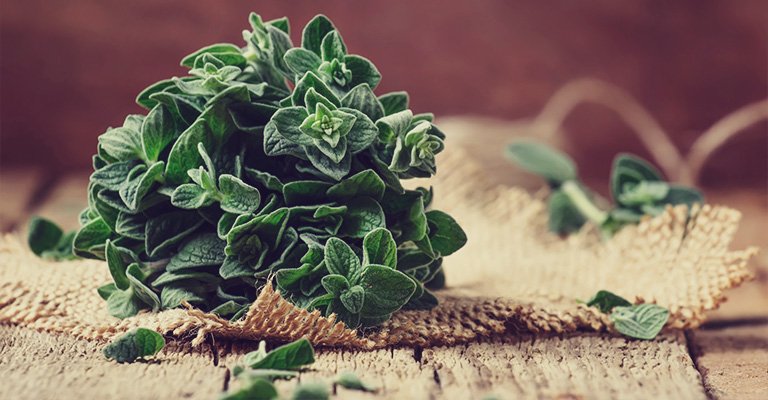
Oregano was used in the manufacture of love potions. According to folklore, it was enough to dip a few leaves in the beverage of the chosen one to make them fall madly in love.
Hippocrates discovered long ago that oregano has antiseptic, antibacterial, antispasmodic and painkilling properties.
For many years, oregano was used medicinally, mostly as an antiseptic, and to help soothe other ailments such as headaches, acne, canker sores and toothaches. Oregano oil, a more potent formulation, was used in combination with steam in order to cleanse the lungs and clear congestion.
There is hope for this herb for various future applications in human and veterinary medicine, in agriculture and in food processing.
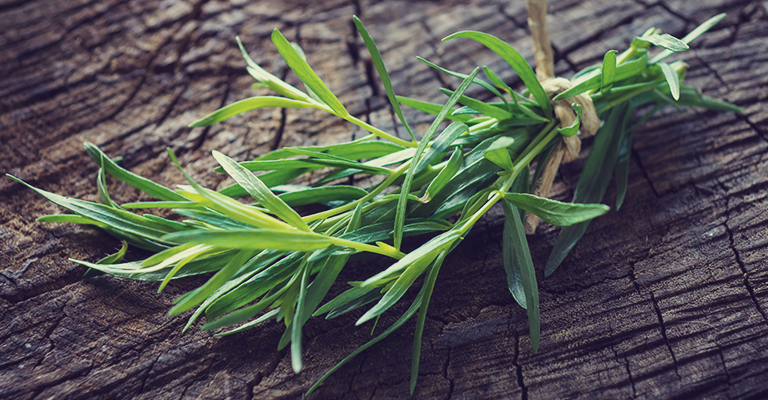
In case of snakebites, some herbalists were once convinced of the healing properties of tarragon. However, this belief was simply influenced by the serpentine shape of its root.
Ancient Romans and Greeks crowned their leaders with dill and laurel. The Romans also used dill to purify the air.
Subscribe to our newsletter to receive our gardening tips, news and more directly in your inbox! Fill in the form below. Please note that fields with an * are required.